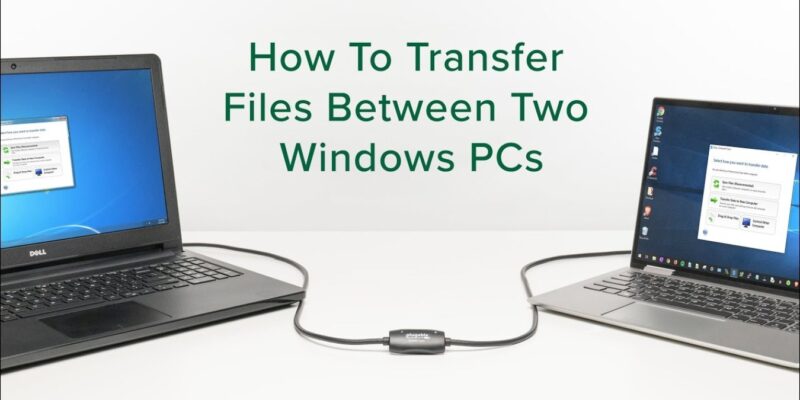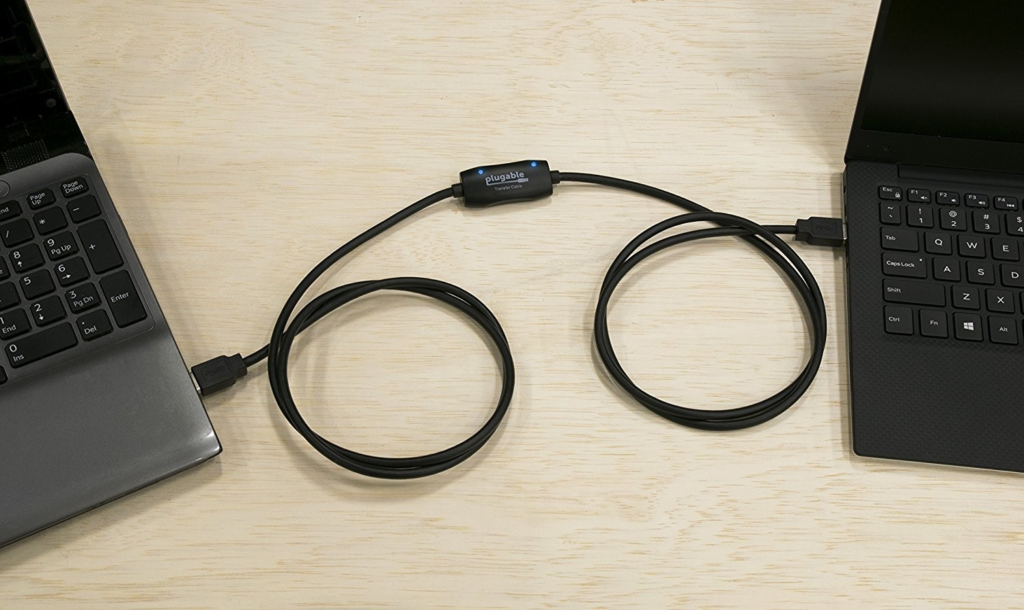
When you get a new computer, it can be fun. It can be hard to figure out how to move things from your old PC to your new one, though. Making sure the move goes smoothly is very important, whether you have important files, photos you love, or necessary apps. We’ll show how to transfer files from PC to PC so you can easily move your files, thanks to the many ways that are available.
How to Transfer Files from PC to PC?
A new PC is the coolest thing ever. New computers usually have more power, better graphics, and more room. Moving stuff from your old computer to your new one may not be as exciting. How to move items between PCs? Let us help you figure it out.
Manual Transfer with an External Storage Device
Manually copying files to an external storage device is simple. This method gives you full control over the transfer and doesn’t require Internet. You may effortlessly transfer files from your old PC to your new one using a USB flash drive or external hard disk.
- First, connect the external storage device to your old computer and find the files to transfer.
- Drag and drop files to the storage device.
- After copying the files, safely detach the storage device and connect it to your new computer. Dragging and dropping files onto your new PC is simple from there.
Transfer via Cloud Storage
Cloud storage makes PC-to-PC file transfers easy and secure. Google Drive, Microsoft OneDrive, and Dropbox let you upload files to the cloud and access them from any internet-connected device.
- Sign up for your preferred cloud storage service to transfer files. After registering, you can upload files from your old PC to the cloud. Use a service’s sync feature or drag and drop files into the cloud storage interface.
- Sign in to your cloud storage account on your new PC to access your data. Download the necessary files to your new computer and utilize them as needed. Scalable cloud storage lets you add capacity as needed.
Data Transfer Cable
For faster transfer than external storage or cloud storage, a data transfer cable may be best. Some cables come with software to connect your old and new PCs for a fast experience for sharing files.

Use a data transfer cord to connect your old and new computers. Software on the cable guides you through the transfer procedure, letting you choose files and folders. This approach eliminates intermediary devices and is ideal for massive data transfers.
Data transmission cable connections on both PCs must be compatible. Some cables need eSATA ports, but USB ports are popular. For the wire to reach both PCs, they must be close.
Migration Assistant for Mac and PC
Due to file format and operating system differences, Mac-PC file transfers might be difficult. Both Mac and PC have transfer tools.
- Migration Assistant is a built-in Mac program that transfers files, settings, and apps from PC to Mac. This utility organizes transferred files and places them on your Mac automatically. Migration Assistant supports Windows XP and later.
- Apple’s iCloud service simplifies file sharing for PC-to-Mac customers. Uploading your files to iCloud on your PC and signing in on your Mac lets you effortlessly download them to your new machine.
- The transfer process between Mac and PC may require file format conversion or program installation on the new computer. For a smooth transfer, consider the manufacturer’s guidance and support resources.
PC Migration Software
PC migration software transfers files, settings, and applications between PCs. Software like Laplink PCmover simplifies the transfer procedure and assures a smooth transition to your new computer with a simple interface.
PC migration software requires installation on both old and new PCs. After installation, the software will help you choose files, settings, and applications to move. This strategy is useful when upgrading to a new OS or transferring many files and apps.
Transfer Locally Over Wi-Fi or LAN
If your old and new computers are on the same network, you can transfer data locally using Wi-Fi or LAN. This method lets you access old computer data from your new one without external devices or internet.

Set up a home network between your old and new PCs to transfer files locally. The network settings on both PCs usually allow this. After connecting to the network, you can select files from your old PC’s shared directories. Move the files to your new PC by copying and pasting.
Local file transfers over Wi-Fi or LAN are safer and faster than cloud-based techniques. For easy file sharing, your network must be safe and both PCs linked to the same network.
Backup Your Data and Wipe Your Old PC
After transferring your files to your new PC, secure them. To prevent hardware failure, theft, and inadvertent deletion, back up your new computer’s data.
Windows’ File History feature automatically backs up files to an external hard disk. You can retrieve lost or older files with this feature. Mac users may trust Time Machine for backup. This feature automates system backups of files, apps, and settings. Connecting an external hard drive to your Mac lets you backup and restore data simply.
After moving files and backing up, appropriately dispose of or repurpose your old PC. Before throwing away or selling your old computer, erase all data. Experts can extract important data from the device, thus transferring or deleting files is not enough.
Use data destruction tools like Darik’s Boot And Nuke to permanently wipe your data. These tools erase the hard drive, making data recovery very difficult. You can recycle or rid of your old PC after wiping it.
Protecting Your Files and Future Transfers
Transferring files between PCs is part of file management. Implementing file protection and accessibility procedures is crucial.
Consider a complete backup strategy to protect your files. Backups to external storage, cloud storage, or NAS devices may be regular. Multiple copies of your files reduce the chance of data loss due to hardware failure, theft, or other events.
Using logical directories and file naming rules might also help you find and manage your files. To simplify file management, categorize files by topic, date, or project.
As technology advances, file transfer techniques may alter. Stay current on file transfer technologies and techniques to guarantee easy upgrades to new PCs or devices.
Also Read: “What is the PR_CONNECT_RESET_ERROR?”
In Closing
Moving things from one computer to another doesn’t have to be hard if you learn our guide of how to transfer files from pc to pc. You can quickly and safely move your files to your new computer using a number of different methods. The most important thing is to find the way that works best for you, whether that’s using an external storage device to move files by hand, cloud storage services, a data transfer cable, or special PC migration software.

![How to Pause Location on Find My iPhone Without Them Knowing? [2024] 20 how to pause location on find my iphone](https://izood.net/wp-content/uploads/2024/10/How-to-Pause-Location-on-Find-My-iPhone-Without-Them-Knowing-400x300.png)


![How To Inspect Element on iPhone [4 Methods] 23 how to inspect element on iphone](https://izood.net/wp-content/uploads/2024/10/how-to-inspect-element-on-iphone-3-400x300.png)


